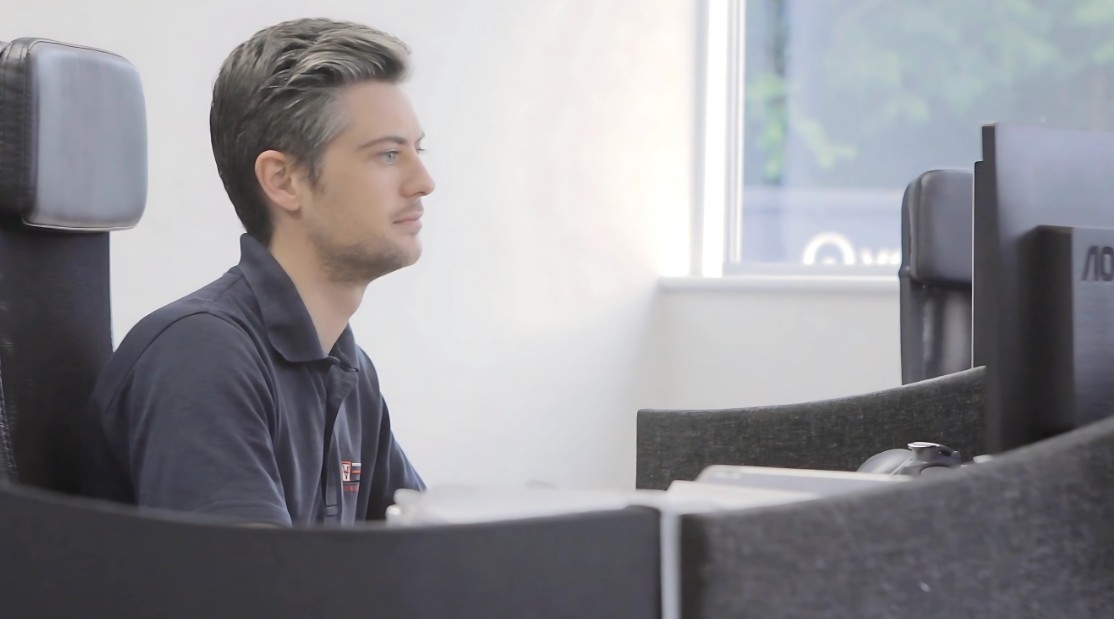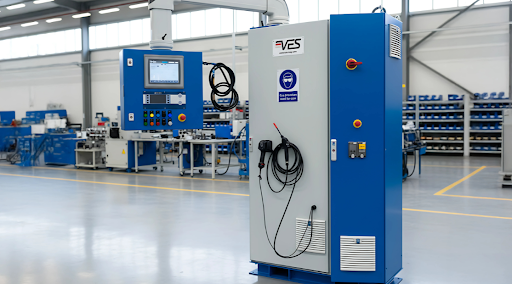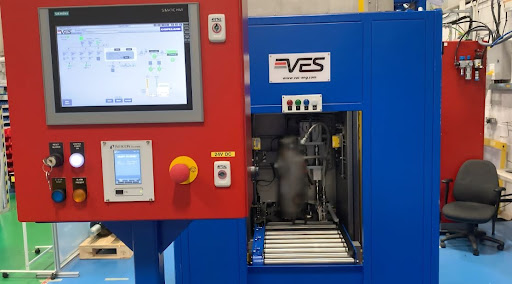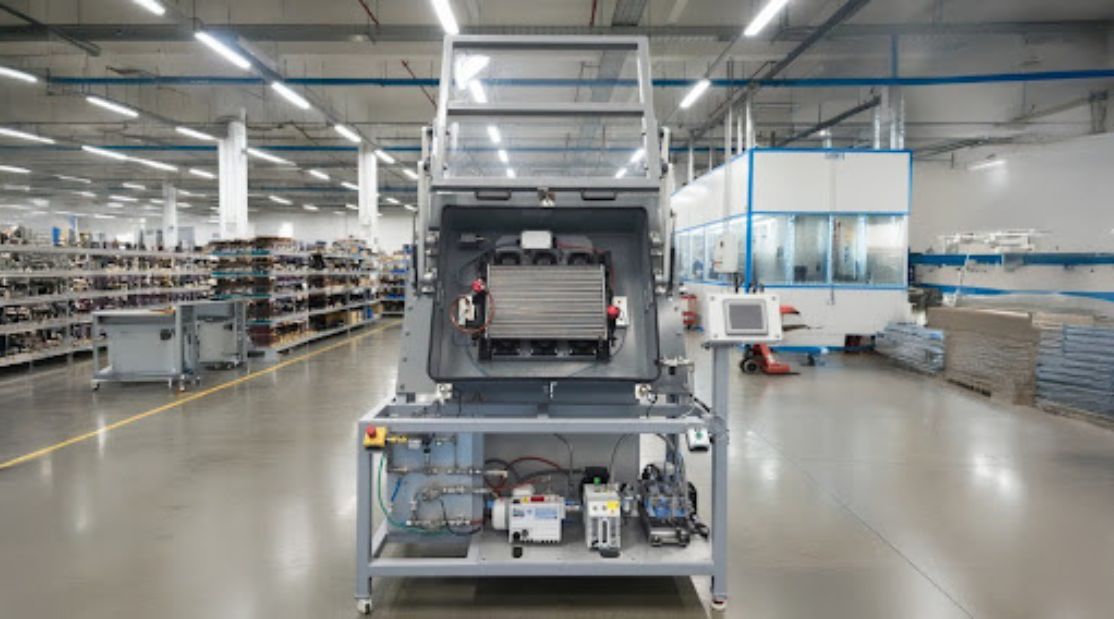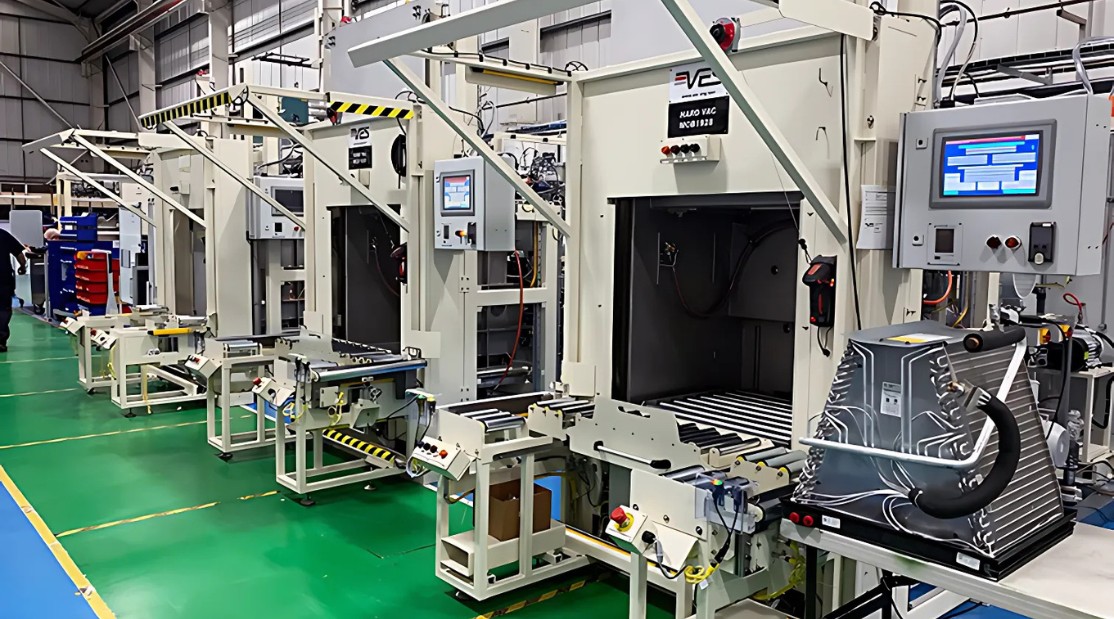We specialise in hard vacuum helium leak testing, the most accurate and sensitive method available for identifying leaks in critical systems. But for engineers and quality professionals working in automotive, clean energy, HVAC, and medical sectors, it's also important to understand how leak rates are calculated, especially when comparing different test methods by referencing a leak rate calculation formula.
This guide explains the leak rate calculation formula, when to use it, and how to interpret results in context, especially when transitioning from pressure decay to vacuum-based helium testing. Oh, and we've also included a very handy leak rate calculator for you to try out above.
What Is Leak Rate?
Leak rate refers to the amount of gas or air that escapes from a sealed system over time. It's a vital measurement used to evaluate system integrity, product safety, and compliance with industry standards.
In vacuum helium testing, leak rate is typically measured in:
- mbar·l/s (millibar-litres per second)
- Pa·m³/s (Pascal-cubic metres per second)
- std.cc/s (standard cubic centimetres per second)
These units allow us to detect leak rates as low as 1×10⁻⁹ mbar·l/s, which is impossible to identify with basic pressure decay methods.
Understanding the Leak Rate Calculation Formula
While helium mass spectrometry provides the highest sensitivity, many engineers begin with a simpler pressure-based method using this fundamental formula:
Q=V x Δp/Δt
Where:
- Q is the leak rate (e.g. in mbar·l/s)
- V is the internal volume of the system (litres)
- Δp is the pressure drop (mbar)
- Δt is the time over which the pressure drop occurs (seconds)
This formula is used in pressure decay testing, which can be useful for early-stage diagnostics or when testing components with larger allowable leak thresholds.
When to Use the Leak Rate Calculation Formula
The formula above provides a useful approximation in the following cases:
- Pre-screening for gross leaks before vacuum testing
- Design validation for enclosure integrity (e.g., EV battery packs)
- Estimating baseline performance of valves, seals, or housings
- Translating test results between pressure decay and vacuum methods
However, it's important to note that this is a macro-level calculation. For components that demand sub-micron leak detection, such as hydrogen fuel systems or sterile medical devices only vacuum helium leak testing offers the required accuracy.
Leak Rate Example: EV Battery Cooling Plate
Let's take a real-world scenario from electric vehicle (EV) development. Imagine you're testing the integrity of an aluminium cooling plate designed to regulate battery temperatures.
- Initial pressure: 2.5 bar
- Final pressure after 30 minutes: 2.4 bar
- Internal volume: 8 litres
- Δp = 100 mbar
- Δt = 1800 seconds
Using the leak rate calculation formula:
Q=15⋅3600100=0.417 mbar.l/s
This leakage rate calculation would be a red flag if your system specification allows a maximum of 1×10⁻⁶ mbar·l/s, as often required in EV battery applications involving thermal management fluids or dielectric coolants.
This example clearly shows how pressure decay can help pre-screen for major leaks, but also why it's not sensitive enough to certify systems with micro-leak thresholds, especially in safety-critical battery environments.
Converting Leak Rate Units
Leak rate units vary across sectors, which can cause confusion when comparing results or setting acceptance thresholds. Common conversions include:
- mbar·l/s to std.cc/min
- Pa·m³/s to mbar·l/s
- std.cc/s to Torr·l/s
To simplify this process, we've developed a free leak rate calculator that automatically performs unit conversions and supports both forward and reverse equations.
Estimating Time from Known Leak Rate
You can also reverse the formula to estimate how long it will take for a system to lose a specific amount of pressure based on a known leak rate:
Δt=V x Δp/Q
This is particularly useful for:
- Predicting maintenance intervals
- Estimating shelf life in medical packaging
- Validating design performance over time
Why VES Uses Helium Leak Testing Under Vacuum
Pressure decay tests provide a rough estimate, but for sensitive components and mission-critical applications, they simply don't go far enough.
At VES, we use hard vacuum helium leak testing because it delivers:
- Ultra-high sensitivity (down to 1×10⁻⁹ mbar·l/s)
- Repeatable, quantitative results
- Fast and reliable identification of micro-leaks
- Compliance with ISO, ASME, and sector-specific test standards
This allows us to test components like fuel cells, heat exchangers, and medical enclosures with the confidence required by leading OEMs and certification bodies.
Try the Leak Rate Calculator
To support our engineering customers, we've built a leak rate calculator designed to:
- Estimate leak rates using the standard formula
- Convert units across engineering and scientific standards
- Perform reverse calculations for test planning and validation
It's an ideal tool for:
- QA engineers and R&D professionals
- Compliance teams verifying pass/fail criteria
- Suppliers preparing components for helium-based testing
Formula Meets Precision
The leakage rate calculation formula provides a valuable entry point for understanding and estimating system leakage. It supports early-stage testing, design iterations, and basic troubleshooting.
But when precision matters, especially in safety-critical applications, only vacuum helium leak detection can reliably measure the smallest leaks and guarantee performance to spec.
Use the calculator to explore your numbers. And when you're ready for validation at scale, feel free to talk to our team.
